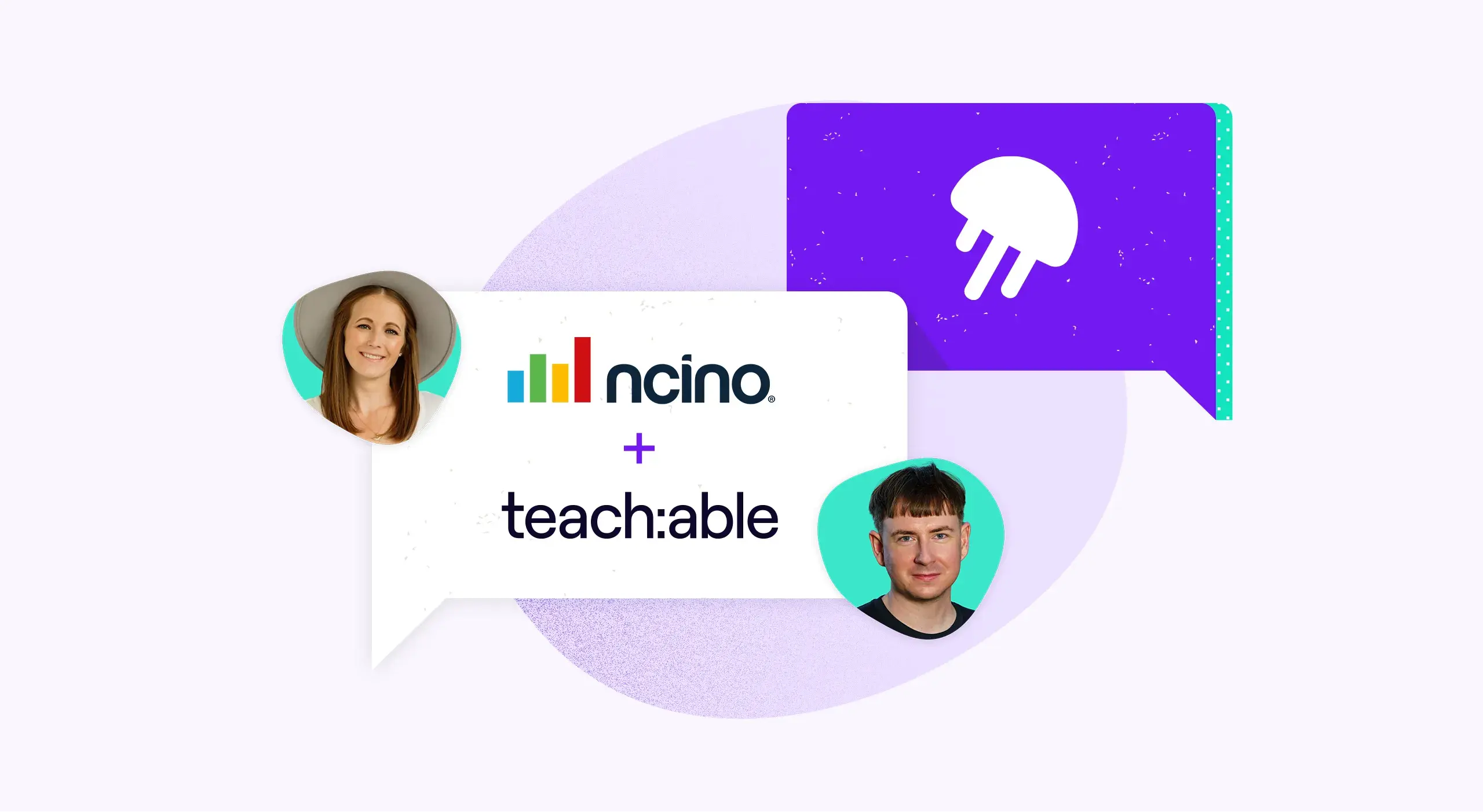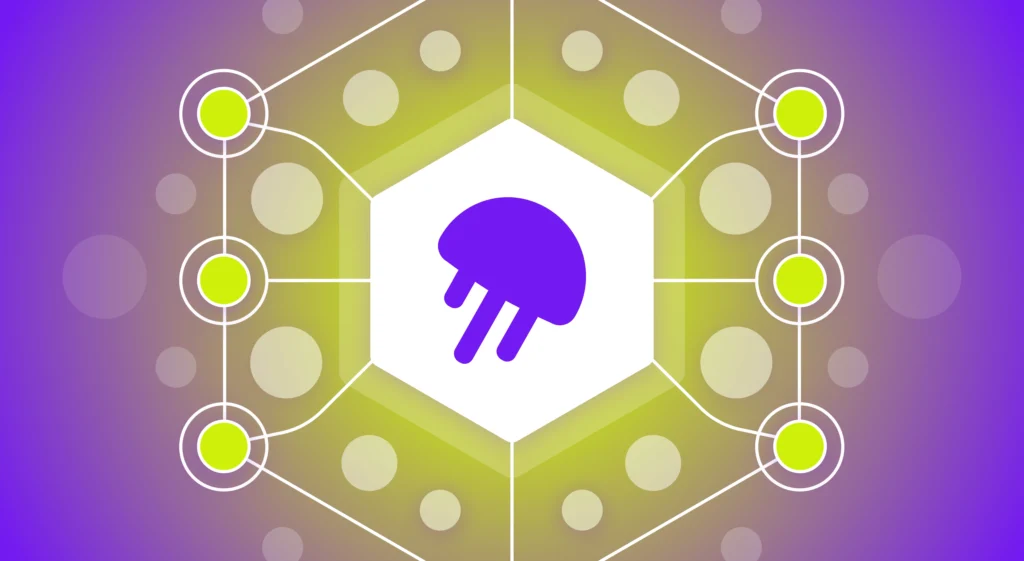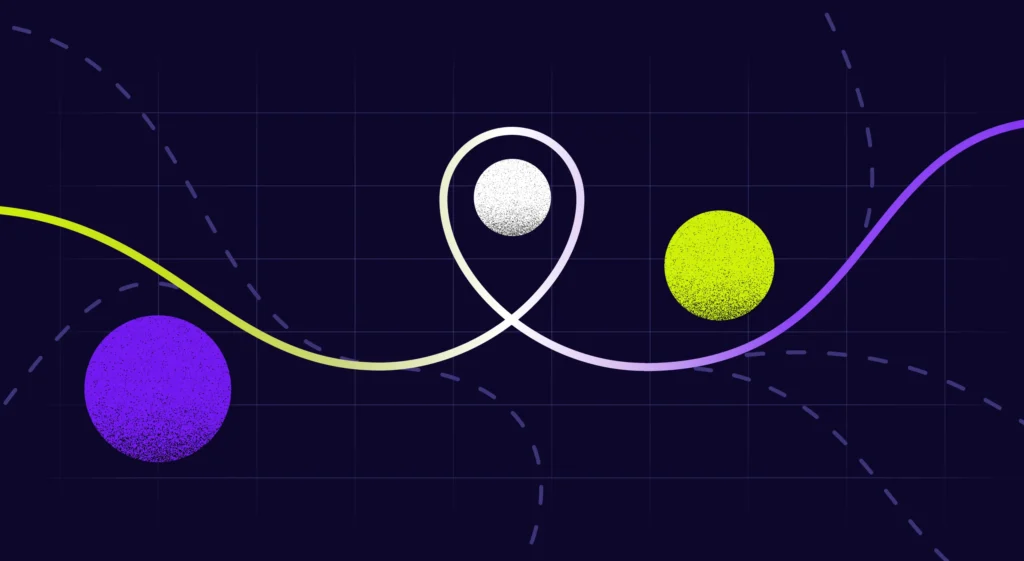The content of this blog originates from a recent webinar titled: How Engineering at nCino and Teachable Drive Alignment Across Their Business. This webinar featured a conversation between Ali Maquet, Director of Product Operations at nCino, and Richard Hunt, VP of Engineering at Teachable. Adam Harris, Director of Product Marketing at Jellyfish, moderated the discussion.
During this webinar, Ali and Richard discussed how they leverage a multi-tenant engineering strategy to:
- Take control of the ever changing technology landscape
- Build stability for their team
- Proactively address executive pain points
Adam Harris: A common definition of business alignment is “an agreement between people who want to work together because of shared interests or aims.” Certainly there are a lot of fun slack emojis to indicate that we’re aligned. Today, we want to get into this definition and explore how it plays out in both your respective roles. We’re going to discuss the what and the why of aligning your organizations, and then how that manifests itself with how you communicate with your teams, your peers, your bosses, so on and so forth.
The macro economic environment changes weekly these days. So I’d like to ask you both, what has your experience been in handling new desires or pressures or visions from around the organization?
Ali Maquet: These desires/pressures/visions come from all different corners of the organization, especially when something exciting is happening in the industry and I think there are some key things we have to do. We have to be adaptable; which we’ve all kind of moved into agile spaces which creates the ability for us to be more adaptable. We have to communicate effectively and lead strategically on all these things. One of the most significant challenges is we have to shift our mindset each time something like this happens. The reason this is so difficult is because what we’re doing is we’re asking individuals in our organization to reevaluate their current perspectives or their current approaches. So we have to make sure we’re addressing all the potential resistance we’re gonna have and foster that open channel of communication, that culture of being willing to change. You have to articulate the why: Why do I want to do this for my organization and how does it benefit me as an individual?
Having this shared understanding of why creates that shared vision and alignment. We also have to create the culture that allows you to do this – we’re willing to grow, we’re willing to learn. We’re willing to improve and recognize what we’re doing or that we need to do something different.
Adam Harris: Richard, over to you. What would you like to add to what Ali said here?
Richard Hunt: The only constant we have in life is change. How are you going to respond to that? And how are we going to adapt? What I’ve seen over time is that change defines leaders. When change comes around, I look into the organization and I can see the people that are going to be the ones that help adapt and meet the needs of the business.
At Teachable, every member of the senior leadership team is new within the past 2 years. That has come with a new organizational structure, goals with working, tooling, and so top to bottom. Our business is very different and requires those people to be able to communicate, openly and honestly, like Ali said about the why…it was for the sustainability of our business and we rallied around that goal.
Adam Harris: What Richard and Ali are saying is that communication and explaining the why behind any change is a critical component of at least ensuring that everyone has a basic understanding of empathy with each other so that we can move forward. I want to ask the question: Are you able to show how engineers and engineering is enabling the achievement of company wide goals? And/or how are you showing that engineering is a key strategic player to help move the business forward?
Ali Maquet: Anyone on this webinar knows that your engineering teams are strategic players. You know that a lot of your company goals cannot be accomplished without the input from your product and engineering organization. We demonstrate this in our organization by aligning everything that we are developing with the business objective. We have cross-functional teams at our development level and solution level so we’re regularly collaborating with strategic leaders across the whole company saying, is this the most important thing to be working on right now?
Our teams also have a responsibility to drive innovation in our organization. And with that innovation you enhance your operational efficiency. We do that by evaluating the performance of our products and our teams, regularly experimenting, trying out new practices; and that positions us as a leader in your industry. When your engineering practices are right, they are top notch. Driving operational efficiency is why we are best positioned in engineering to make data informed decisions and bring that data informed perspective to decisions we’re making. We utilize data when we’re coming to the table as a strategic player. We answer the question: What is the data telling us that can help drive and inform our approaches?
Adam Harris: Yeah, that’s great. Richard – I know that we talked about Teachable’s views on experimentation, anything to add?
Richard Hunt: 20 years ago, engineering teams were the execution arm of a business. You join a company, and you’re just delivering whatever someone says. Is it really driving towards the ultimate objective? Who knows.
I’m very fortunate at Teachable to have a team that is somewhat new and we’ve been able to rethink how we align ourselves. We use a lightweight framework called OGSP (Objectives, Goals, Strategies, Plans). It’s a one pager document that sounds super simple, but it’s effective in that it compels focus and clarity. That’s how we’re aligning ourselves against the objectives and goals that we set for ourselves. Do these strategies and plans that we’re thinking of executing upon align with that broader business context? Are we delivering upon the things that we said we would accelerate?
In the experimentation vein, that’s where I think it’s really helpful for engineering teams to be able to express their creativity because engineering is actually a creative discipline. People forget that. This time last year everybody in the world was playing with Chat GPT. So we had a hackathon last December, and it turned out that that AI tooling that we built was the basis of what actually became a whole suite of features in our product. Now you can start on our platform with AI enabled to get you going, generate web pages, and content. Pretty cool.
Adam Harris: That’s really cool. What I’m hearing is this emphasis on combining an aligned engineer and organization with the business objectives. It means operational efficiency which obviously leads to reduced costs and impacts the bottom line.
This is a nice evolution to our second topic: Building stability for your teams. My first question is around organizing your engineering teams. And how do you ensure that even the individual developers understand the why behind their work. And how do you make sure that your teams are aligned with your vision so they feel supported and appreciated? Let’s start with Ali again. How does that work at nCino?
Ali Maquet: It comes down to culture. Are you empowering your team and do your teams understand why they’re doing the work they’re doing? If they’re empowered and they understand the work they’re doing, they’re going to deliver. At nCino, we actually have solution focused development teams and persona focused development teams. Slightly different approaches, but both result in the same solution. They’re both deeply rooted in the comprehensive understanding of the problems to solve and who they’re solving them for. This allows our team to thrive on their ability to know the problem, really understand the customer.
Adam Harris: I love that. Richard, how about Teachable?
Richard Hunt: This is always a challenge for engineering leaders. My advice here would be that the market could be an influence in creating stability for you. From there, how do you show impact for what your teams are doing? And then, tying that back to the company’s mission or vision of what you should be achieving. We use the OGSP framework to drive strategy tops down and bottoms up and that’s how we get input from our engineers on if things are achievable.
Adam Harris: Richard – are there any particular tactics or strategies that you employ to ensure that there’s flexibility with opportunities for growth and a culture of trust to provide feedback throughout all that?
Richard Hunt: Feedback should always be a 2 way street. I understand that the effect of the highest person’s opinion in the room can just null that 2 way communication and so at Teachable, our motto is, “Share what you know.” We have a “share what you know” survey, which is our take on a developer experience surveying – that just levels the playing field. I get open-ended feedback and I also get feedback on a scoring matrix that can help us see where we should invest in our organization. It’s a very collaborative environment and our culture is very remote centric. We put a lot of effort into everybody hosting a lunch and learn at least once a year in the company. A lot of folks have side hustles because they’re creators themselves. So they teach and coach on our platform.
Adam Harris: Awesome. Ali – what kind of tactics or strategies provide opportunities for growth and building trust in nCino?
Ali Maquet: At nCino, something that I’ve witnessed the value of is, we have fun. That sounds so silly and simple. We have real life fun and when you foster fun in your organization, you get more trust. You get more innovation and people want to collaborate more so it’s worth taking a step away from the desk. It’s worth taking some time to get to know your co-workers and see them in a different light. It’s one of our core values.
There’s been a huge impact on open communication. You’re able to recognize employees differently and recognize their strength and celebrate them in different ways. It empowers people that may not sit in a leadership title to be leaders, because they get more comfortable in their organization and collaborate cross-functionally. I’ve made so many new friends, people that I wouldn’t have known otherwise because I took time to be part of the fun. We spend so much of our time at work, we should have a little bit of fun.
Adam Harris: How are you articulating a future vision to your executive peers that addresses these challenges or pressures? Obviously you’re all high up in your organizations and are responsible for outcomes that your board reviews. So how do you communicate this stuff? Whether it be updates on deliverables or during strategic planning sessions, how do you communicate your budget and your financial priorities?
Ali Maquet: One of the value propositions to our customer base is that we aren’t just delivering new pieces of software, we’re making sure that we offer not only the technology but the expertise, the experience that helps you transform your business. This means we look at driving efficiencies – we look at how our solutions work across the entire company. This has been so successful with our customer base, and we’ve actually brought it in house and applied the same thing.
We have this structure where we bring individuals from across the company that help deliver a solution and they’re part of that cross functional team. We pull together a variety of data sources and then we look to those leaders to help ensure that it’s communicated clearly what’s happening. You get a holistic picture of the entire solution and you’re making sure that the executive leadership team knows what’s going on.
An example of how this has been really beneficial is we can build amazing things inside engineering…but if sales can’t sell it, and if customer success can’t support it, well, forget it. Then, we’ve wasted money and we haven’t improved our customers’ lives at all. A little more tactically, we looked at a lot of metrics back to that dashboard. We look at the health of the product and we couple that with the health and performance of our engineering teams, again, to get that holistic picture of the solution. We want to make sure that we’re performing efficiently.
Adam Harris: Richard, from a Teachable perspective, what does that look like in regards to executive communication? How do those relationships work for you as a VP of Engineering?
Richard Hunt: For any business that’s selling software there has to be trust between the R&D organization and other parts of the business. You can go about how you set your goals and objectives any way you want to, but if there isn’t confidence that engineering’s priorities and deliverables are aligned with these strategic business objectives, then what are you doing?
When we started this conversation 2 years ago when I joined, we leveraged the SPACE framework and mapped out where we thought we were at in each of those areas. It was really clear that engineering was not aligned, in terms of performance, of where we were investing our time to drive business outcomes. That meant shifting teams, focus, and resetting goals. Over time we built that confidence with stakeholders that were driving the right outcomes and we’ve been working through different areas where we had room for improvement like what was engineering’s productivity? Metrics? What is a good benchmark? How can we push towards that where there are handoffs in our processes?
So speaking to efficiency, having to get closer to the product, having a closer department. The last hurdle for us has been ensuring the team has everything they need to deliver those outcomes.
Adam Harris: I think we’ve put a nice bow on this theme of empathy, between organizations and meeting somewhere in the middle where you meet in a shared space of understanding and empathy once you’ve ensured that there’s compromise all around the organization to truly understand how every other organization’s workstream interacts with each other.
Richard and Ali, thank you so much for that awesome discussion.







